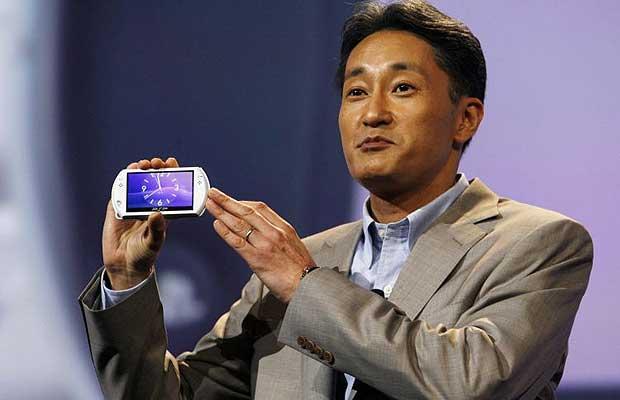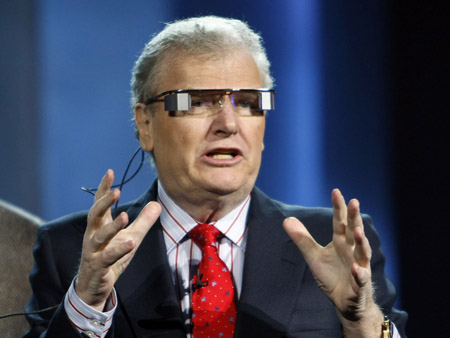This week, after teasing it with a countdown, Sony America announced the release of their Android smartphone, the Xperia X10.
In years gone by, Sony’s ‘entrance’ into a new market would be cause for celebration. For decades, Sony’s name meant slick design and cutting edge tech. This should be a big deal.
The Xperia X10, though? I’ve played with the phone for a few weeks now, and it’s pretty great. It’s thin and the screen is incredible. But, beyond also having a clunky Sony Ericsson skin, the device is also running Android 1.6. Yep. In August 2010, Sony are releasing a phone that is three steps behind current Android phones. An update to Android 2.1 is planned to be released in Q4 – which is when we’ll likely start hearing things about Android 3.0.
This clearly is a sign of something bigger. While Sony are, undoubtedly, still a massive player in the tech world, it’s also inarguable that they are no longer the leaders they once were. The digital age has, in many was, stymied them, and Sony have, for about a decade now, been left playing catch-up.
But is it too late for them to get their mojo back? Or is there some way that Sony can not only remain a competent consumer electronics company, but once more become the symbol of the cutting edge?
Sony’s Flaws
I should first be clear: I have, for years now, been ‘a Sony fan’. Everyone in my family has been too, and our apartments and houses are full of Sony gadgets. I mean, I still own a functioning minidisc player and a Sony MP3 player (which were long ago replaced by my iPhone).
But it’s hard to keep wanting to buy or use Sony products when, like the Android 1.6-powered X10, they are quite simply not as good as other products out there.
So what’s going on at Sony? Well, historically Sony had three problems that have hurt it in the digital age:
- They embraced closed, proprietary standards.
- Sony’s departments either didn’t talk to each other, or prioritized the wrong things. So Sony’s music label killed their MP3 players with copyright, but, at the same time, never thought to get the music store onto the PSP.
- They didn’t understand software. This is something anyone who has either used Sonicstage in the past, or Media Go or the Reader software can attest to.
Problems 1 and 2 have now changed. You can get Netflix or YouTube on Sony’s Blu-Ray players, the PS3, or their BRAVIA TVs. What’s more, their Readers use the standard ePub format, while all of Sony’s electronic devices – yes, even their MP3 players – play all the major formats.
So, problem solved, right? No, not really. Their software generally still sucks. Media Go makes iTunes look like a light, efficient piece of software.
But Sony have are much larger problem that is preventing them from being innovators:
- Sony have always been a “technology first” company. They create cool, high-powered tech and then figure out what can be done with it.
This is a mistake. Indeed, after taking this approach with the PS3, it was a near-fatal mistake for Sony (when you crunch the numbers, it’s unlikely the PS3 will ever recoup to $2-3 billion investment that was made). It worked in the past, with the Walkman and the CD player. But times have changed.
What Sony Needs to Change
The key to succeeding in the modern tech world is straightforward, but not at all simple: instead of creating tech and then seeing what can be done with it, you need to think about what people want to do and then create tech for that.
Think about the major success stories of the last 10 years. The Blackberry created a secure email system for people on the go. The iPhone’s interface coupled with the App Store infrastructure meant it truly became an ‘all-in-one’ device. Xbox Live allowed gamers to be social while competing against each other.
What do all these examples share? They predicted what consumers would want to do before technology allowed them to do it. It wasn’t about building the fanciest machine or the most robust technology, but about using technology to deliver something new.
Sure, before, designing better tech worked because it made tasks more convenient and better. But the digital world has changed that – while Sony hasn’t changed enough.
Some Bad Signs
If that’s what Sony has to do though, there are a couple of worrying signs things aren’t changing fast enough.
First of all, 3-D. Is there any better symbol of a company that develops a technology and then tries to push it on people than 3-D? No-one is yet convinced of the market for3-D or how people will react to having to buy and wear glasses to sit and watch a film. Yet Sony, having invested a great deal, and in need of a new revenue stream after their TVs have become a commodity, are pushing it hard.
Additionally, there are Sony’s Reader eBook products, which were first out of the gate. But again, Sony failed to read what people would want to do with the technology, and let Kindle and its wireless, branded approach capture mindshare.
And then there’s the Xperia, which is beautiful, but handicapped. Want another ‘symbol’ of the problems? The hardware doesn’t support multi-touch. Yeah.
So Sony are still stuck in a model in which they are thinking about devices and not services, individual pieces of technology and not ecosystems.
Playstation: A Sign of Hope?
Funnily though, it’s the Playstation that seems to be the most hopeful, optimistic part of Sony. Given how disastrous the launch was (Five-hundred and ninety-nine US dollars!) this is a bit ironic.
But, at least if we forget about the PSP for a bit, the PS3 is a sign of a company who ‘gets it’. It supports open standards, whether which hard drive you put in it, or MP3s/AACs/MP4/DivX etc. It has its own media ecosystem, the Playstation Store, but also supports Hulu Plus and Netflix, giving consumers numerous option. It has a Blu-Ray player built-in, but still plays DVDs or even torrented files (as long as they aren’t MKVs). And when it comes to games, it supports both big-budget blockbusters and small indie gems.
Perhaps unsurprisingly, the Playstation division is part of the ‘Networked Products & Service Group’. Funny how that works, eh? The most promising area in Sony is the one that is dealing in digital and network services. Who knew?
Steps to Success
So, in some ways, Sony have been relegated to just being like Samsung or Panasonic – competent tech companies who do little innovative or trailblazing. But in other segments – namely, the ‘it-almost-died’ Playstation biz – they are showing they understand what to do.
So what else does Sony need to do?
- Where oh where is the Sony Online Service, i.e. the grand network that was supposed to work on all manner of devices and deliver all types of content. If you want to compete, you might want to think about actually launching that at some point.
- Compete in the tablet market with Android. No-one else but Sony could make a tablet more beautiful than the iPad, and Android (when it hits 3.0) is the only software platform worth dealing with. Forget Windows and think tablet-specific.
- Forget about isolated tech experiences, and think about how people want to access their media, books, magazines etc. in a networked world. What can you create that will offer something new for all those people who live in digital?
- It’s all about content. Sign deals with content providers before others. Make sure the tablet launches with well-priced magazine and newspaper subscriptions.
- The entire media business is undergoing transformation. Now tech companies have to be the ones to help figure out what happens next. The status quo is not enough, and neither is playing catch-up to Apple.
What else does Sony have to do to become leaders again? Let us know your thoughts in our comments section.





I swear that phone’s been out for ages… In the uk at least.
All that needs to be used as evidence are all of the missteps with the Sony Reader. We’ve seen how other companies will put out new models in less than a year. With Sony, no. They used to do that with the CLIE (their PalmOS PDA), but I guess that lost them a lot of money and they’ve became gun-shy. There are those within Sony who said the Reader should have had wireless from the start. Now look at how Kindle has won — due to wireless!
As long as Sony’s internal departments have a conflict of interest it will be very hard for them to innovate again. The movie and music side does not want blu ray burners or dvr technology or digital distribution, while the pc division wants to add new features to their pc’s and laptops. The playstation division has no direction and flip flops on all of its decisions too. I will not even go into the issue regarding the 3d television technology that they are trying to force on consumers. No one wants to buy a tv and then have to turn around and buy extra glasses to use the tech. Package them together at a consumer friendly price or fail. It’s the same reason PS3 online has not taken off as a community. No headset with every machine limits the experience. They have a lot of decisions to make in the next 2 years to get back on track. People are also starting to use their monitors more and more for watching movies and television too, which will mean less hdtv sales. They are hurting for sure……. Sony phones???… crickets……..
Sony Ericsson phone have always looked cheap to me. The fact that they would release a phone with Android 1.6 on it just doesn’t make sense to me. Seriously, what are they thinking?
A few years back the Sony brand used to mean something to me. Anything electronic I had had to say sony. I felt this way as recently as a few years ago, when I bought my first HDTV. I ended up getting an HP because Sony’s TV I was looking at didn’t seem much better for an extra $200. Sony was about innovation before Apple decided they were going to make other things besides computers. They need to get back to that and soon.